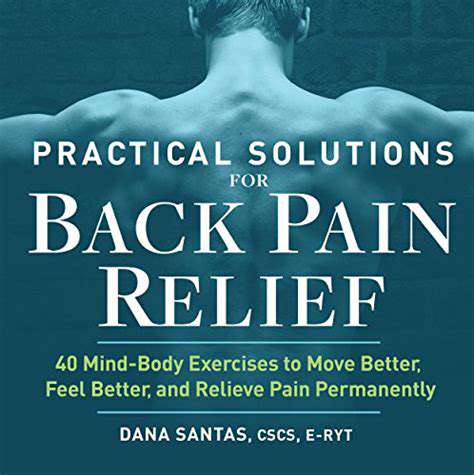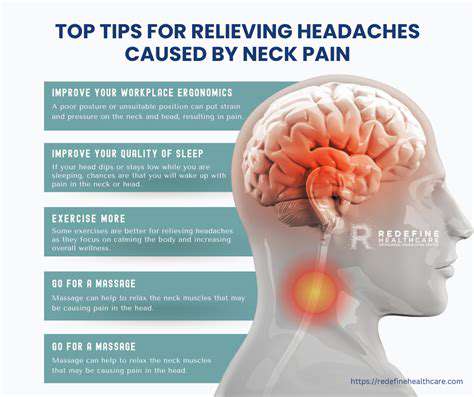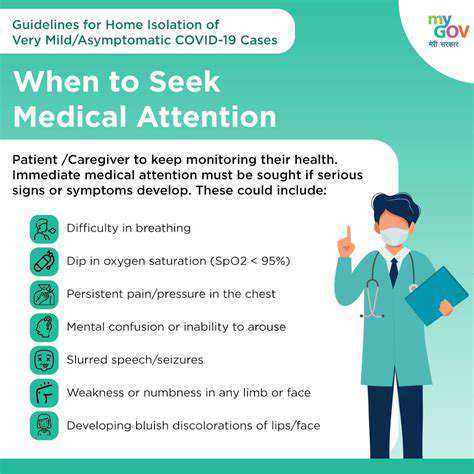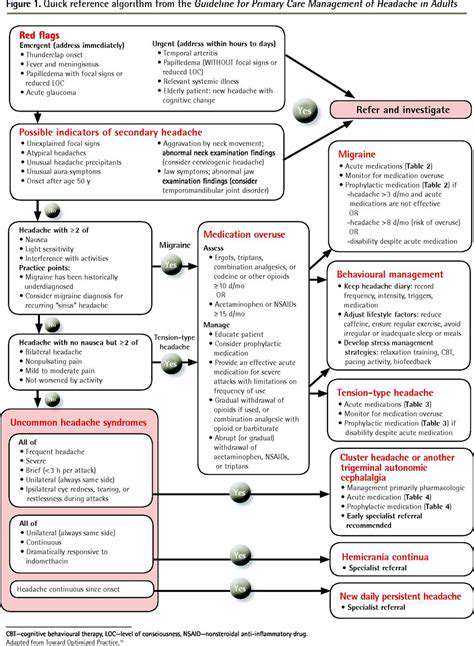Lifestyle Adjustments for Long Term Headache Management
Regular Physical Activity and its Impact on Headaches
Understanding the Link Between Physical Activity and Headaches
While exercise generally benefits health, certain activities may precipitate headaches in susceptible individuals. The key lies in understanding your personal triggers and adapting your routine accordingly. Some people find that high-intensity interval training or exercises involving sudden movements can provoke tension-type headaches. Being mindful of your body's responses during different activities helps identify potential triggers.
Interestingly, insufficient physical activity can also contribute to headache frequency. Prolonged sitting often leads to muscle stiffness and tension, particularly in the neck and shoulders, which may manifest as headaches. Incorporating gentle movement breaks throughout the day can help prevent this tension from building up.
Types of Headaches and Their Relation to Exercise
Different headache types respond uniquely to physical activity. Tension headaches often stem from muscular tightness and may worsen with certain strength training exercises. Migraine sufferers might find that vigorous cardio triggers attacks, while others report exercise helps prevent them. Keeping a headache diary that notes exercise type, intensity, and timing can reveal valuable patterns.
The relationship between specific exercises and headache types varies widely. Low-impact activities like swimming or yoga often prove beneficial, while exercises involving jarring movements (like running on hard surfaces) may aggravate symptoms for some individuals.
The Role of Hydration and Nutrition During Exercise
Proper fluid intake before, during, and after exercise is crucial for preventing exertion-related headaches. Even mild dehydration can trigger headache symptoms, so drink water consistently throughout your workout. Electrolyte replacement becomes especially important during prolonged or intense sessions in hot environments.
Nutritional choices surrounding exercise also impact headache susceptibility. A small, balanced snack containing protein and complex carbohydrates about 30-60 minutes before working out provides sustained energy without causing blood sugar spikes that might trigger headaches.
Exercise Intensity and Duration Considerations
Gradual progression is key when establishing an exercise routine to minimize headache risk. Sudden increases in workout duration or intensity often precede exercise-induced headaches. The 10% rule - increasing activity levels by no more than 10% per week - provides a safe framework for progression while allowing your body to adapt.
Finding the Right Balance for Your Needs
Personal experimentation is essential for discovering the exercise regimen that works best for you. Some individuals thrive on daily moderate activity, while others need more recovery time between sessions. Pay attention to how different activities affect your headache patterns and adjust accordingly. Remember that consistency with moderate exercise often yields better long-term results than sporadic intense workouts.
Seeking Professional Guidance for Personalized Strategies
For those experiencing frequent exercise-related headaches, consulting with healthcare professionals can provide valuable insights. A physical therapist can assess your movement patterns for potential contributors to headache symptoms, while a sports medicine physician can evaluate for underlying conditions. These specialists can develop customized exercise prescriptions that accommodate your unique needs and limitations.
Regular follow-ups with your healthcare team ensure your exercise plan remains appropriate as your fitness level changes or if new symptoms emerge. Their expertise can help you navigate the complex relationship between physical activity and headache management.








